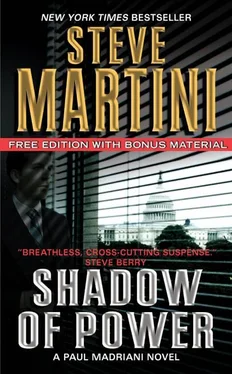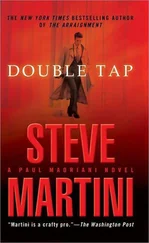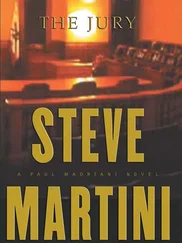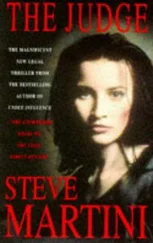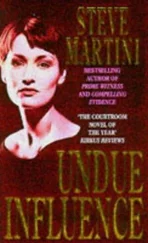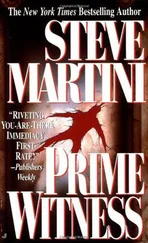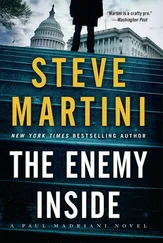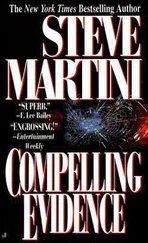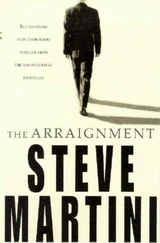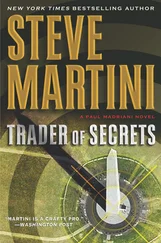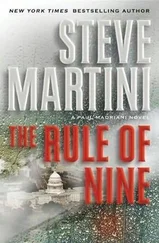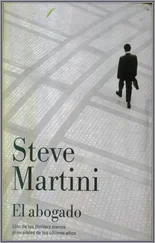“No. I’m simply saying that we didn’t find any questioned hairs that matched your client.” The witness is good. He’s only going to play in his ballpark. As far as Prichert is concerned, the re-creation of events at the scene of the crime is a boat that Detrick and Tuchio have built. Let them sail it out to sea.
What is becoming abundantly clear is that the cops jumped before they had all the pieces to the puzzle. If Carl hadn’t run from the scene, we wouldn’t be here today. If he had gone to his supervisor and reported what he found, the police would have questioned him, taken his prints-both shoes and hands-plucked a few hairs from his head, and cleared him, at least initially. That’s what they did with the other hotel employees. No doubt they would have checked him out, found his friends, and probably even discovered that Carl had met in the bunker with his buddies and talked about doing evil things to Scarborough. But that would have taken time, and in that time the forensics experts from the crime lab would have been piecing together all the little details that would have told them that Carl didn’t do it, at least not in the way that Tuchio and Detrick have described.
It may be a minor point, no doubt one that Tuchio will step around in his closing argument. But I take Prichert over the falls on it anyway.
“During your investigation at the scene, did you find any small bloody transfer marks on or under the tray with the food or on the tablecloth underneath it?”
He thinks about this for a moment. “No.”
“How would that be possible if the perpetrator, immediately after killing the victim and still wearing these blood-soaked gloves, retrieved that tray and the tablecloth from the hall outside and then brought them in and placed them on that table?”
Prichert thinks about this in silence for a long moment. The tray, how did it fly into the room? “It’s probably not possible in the scenario you present,” he says.
“That’s not my scenario. That’s the scenario presented by Detective Detrick when he testified earlier.”
“Whoever crafted the scenario, it’s inconsequential,” says Prichert. “Change the order in which the tray came into the room and it’s entirely possible that there would be no blood on it.”
“How, for example?”
He smiles at me. “I don’t know. I’m not a crime-reconstruction expert.”
“You mean like Detective Detrick?”
He looks at me but doesn’t say anything. Unlike Detrick, Prichert is smart enough to avoid playing God, rearranging the cosmos of physical facts from the stand. He knows that somewhere, sometime, something will be punching a hole in the side of the universe when he’s done.
I let it drop. Tuchio and I will argue over this in closing. He will try to finesse it, bury it like a bone, and I will try to dig it up. In the end it is probably one of the multitude of items the jury will sleep through-bloody little smudges that aren’t there, unlike the fingerprints and shoe impressions that are.
I’m just about to move on to my centerpiece with Prichert when I remember the little item that Tuchio ignored in his direct questioning of the witness.
“One last question on hair,” I tell him. “When you testified earlier, you stated that there were a number of questioned hair samples, those with unidentified owners you said were collected from the area around the toe kick under the counter in the bathroom.”
“That’s correct.”
“And I think you testified that two of these-blond samples, I believe-were collected with tape from under the toe kick?”
“That’s right.”
“And that from your examination, both of these appeared to be hair samples from the same unidentified person?”
“Yes, the characteristics of the hair were sufficiently similar in each case, and that’s what I concluded. Yes.”
“You also stated that you found a number of blond hair samples-unidentified, what you call questioned samples-out in the living room, some of them on or around the chair near the victim?”
“Ah, I know what you’re getting at,” he says.
“Let me ask the question,” I tell him. “Did any of the blond hairs in the living room match the blond hairs found in the bath so as to cause you”-he’s already nodding-“to conclude that they also came from this same unknown, unidentified person whose samples you found in the bathroom?”
This was in his forensics report.
“Yes. One of them,” he says. “Do you mind if I consult my notes?”
“I have no objection.” I turn and look at Tuchio.
He shrugs.
Prichert flips through his report. He finds the page. “Yes, it was the potential floater,” he says. “I couldn’t tell how long it had been in the crevice of the chair, but it did appear based on hair characteristics to match the questioned samples in the bath. But like I say, many of the samples we found in the suite turned out to be matches.”
“Yes, but were any of those matches found in different rooms in that suite?”
“Absolutely. A number of them,” says Prichert. “We found hair, questioned samples-that is, unidentified owners with hair samples-in the bedroom and out in the living room. There were matches between samples in the living room and the dining room. It’s a problem,” he says. “You have a lot of transient use, and it’s all in a confined area.”
I move to the last issue with Prichert. It was Harry who first noticed it, looking at photos of the scene sent to our office by the crime lab. Even after he pointed it out to me, I couldn’t see it. The problem is, neither of the two photos catch it with any clarity. One of them is an oversize magnification concentrating on the zipper at the top of the leather portfolio, showing it in the open position. The other is a distance shot so far out that it’s almost impossible to see. Harry admitted that he would never have caught it himself, except for the fact that the two photos were included in an envelope labeled “Blood-Spatter Tracks.” Harry kept returning to the one close-up shot, searching for the blood, when he suddenly realized what he was looking at.
Three weeks ago, right as jury selection was ending and the trial was getting ready to start, Harry sauntered over to the police department’s property and evidence room. In actuality, this is a good-size warehouse just out of the downtown area. He wanted to look at some of the items taken by the police and inventoried in our case. Most of these came from the crime scene, along with some items from Scarborough’s apartment in Washington, boxes of files and his desktop computer. When Harry saw the number of boxes with files from the victim’s D.C. apartment, he made a note to send one of the paralegals back to the evidence room to go through them just in case Tuchio hadn’t sent us everything. To Harry it looked like there was a lot of boxed-up paper, more than the D.A. had sent us in discovery.
Of course a sergeant hovered over him in the caged locker as Harry surveyed what was there. Harry was not allowed to touch any of it, just look. It took him less than a minute, scanning down a printed inventory list, to find what he wanted. The box was pulled and put on a table outside the cage, where the same officer eyed Harry as my partner carefully went through the box wearing a pair of latex surgical gloves. When he got to the item, Harry barely slowed down. He knew that if he looked at it too long, the sergeant standing behind him would make a mental note and call Tuchio’s office with a report as soon as he left. An hour later Harry was back at the office telling me that what he’d seen in the photograph was there in physical form. He also warned me that unless we moved quickly, because of the way things were stored, stacked in boxes in the caged locker, it might not survive for long.
Читать дальше
